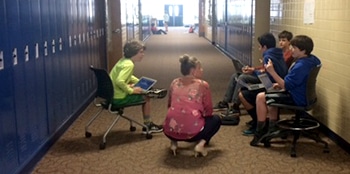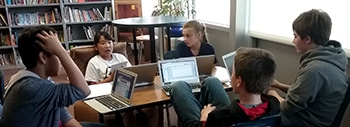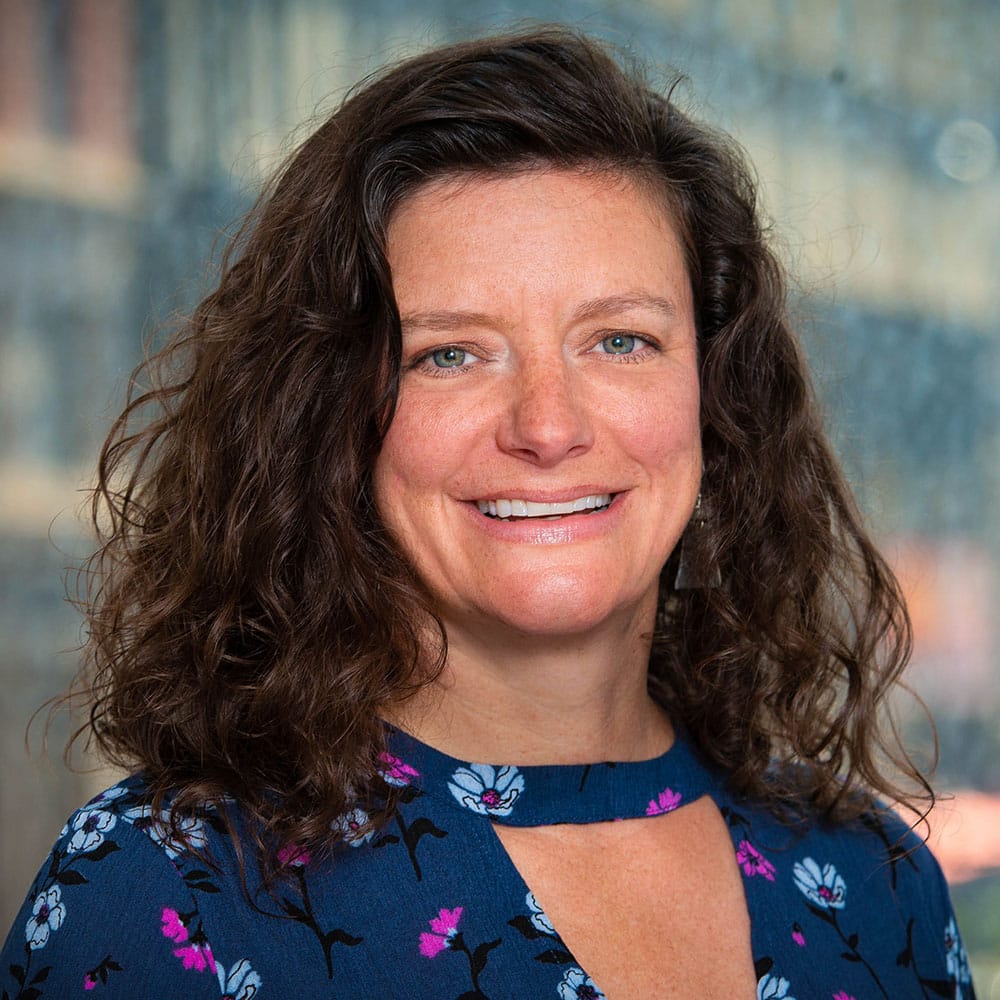How might we nurture an environment where everyone has the space to thrive with learning? What does that suggest for what we expect from our students, colleagues and leaders?
Authentic learning requires vulnerability, and we need to provide environments that allow for it. We need to think critically and creatively about what space provides the best opportunity for learning. This means space for group activities. Space for giving each other grounding moments. Space for elbow room. Space that opens more possibilities to better understand ourselves and the world.
 This flexibility in working space can be seen throughout Kenowa Hills Public School District, from their youngest students to their older classrooms. The flexibility empowers students of all ages.
This flexibility in working space can be seen throughout Kenowa Hills Public School District, from their youngest students to their older classrooms. The flexibility empowers students of all ages.
This is what Rebecca Perry, a kindergarten teacher at Kenowa Hills Zinser Elementary School, creates in her classroom. Kindergartners sit side-by-side, working as writing partners. They work throughout the room with flexible space and seating options. Some sit in scoop bucket seats, while others lay on the floor. Some sit at round tables in a play kitchen area, while others sit at their desks.
No matter where they choose to sit, they are engaged in their learning. Research shows that providing student choice within the three categories of environment, social and learning increases intrinsic motivation. Teachers can impact students self-efficacy right from the start, simply by letting them choose their learning spaces
 Lisa White, a sixth grade teacher in Kenowa Hills, has looked for creative ways to give her students flexible learning spaces, including Adopt-a-Classroom programs for supplies or sourcing alternative seating from Craigslist. “I find that the students are excited to work at their collaborative settings,” she said.
Lisa White, a sixth grade teacher in Kenowa Hills, has looked for creative ways to give her students flexible learning spaces, including Adopt-a-Classroom programs for supplies or sourcing alternative seating from Craigslist. “I find that the students are excited to work at their collaborative settings,” she said.
Lisa’s students agree. One told me that the flexible spaces support keeping focus on work and learning and another was excited for the collaborative options.
 A creative, flexible classroom environment directly correlates to effective learning. It provides momentum and support for energizing school culture and student collaboration. An added bonus is that it doesn’t require a lot of money; it’s an area where we can achieve equity in simple ways.
A creative, flexible classroom environment directly correlates to effective learning. It provides momentum and support for energizing school culture and student collaboration. An added bonus is that it doesn’t require a lot of money; it’s an area where we can achieve equity in simple ways.
“I feel that my students enjoy the writing experience more when they can choose a seat that is comfortable for them,” Rebecca said. “It also allows the students to be spread out more and less distracted by other students or other partnerships. My hope for flexible seating is to let all students be successful in their learning. If they need to choose a space that works for them to be successful, then I need to be supportive of that.”


